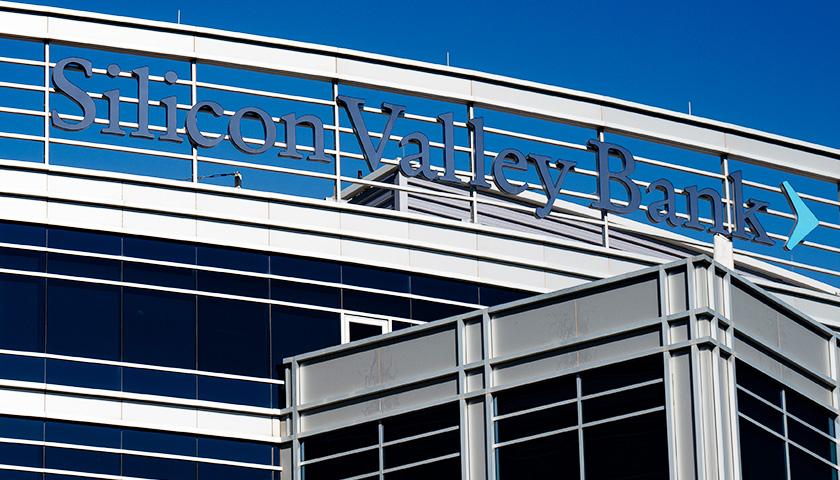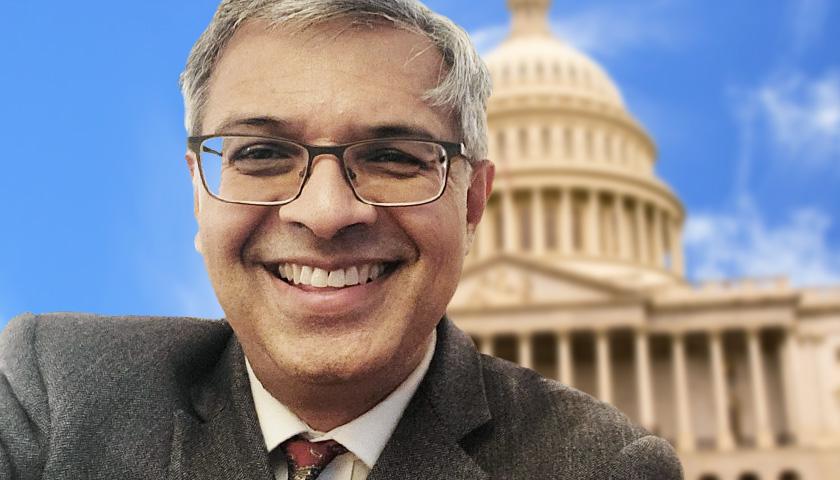by Sheryl Kaufman
A collection of seemingly random crises can spell out a sinister “conspiracy theory” when you consider their connections and where they are leading. An overplayed plot? Perhaps, but how many so-called conspiracy theories have proven to be reality recently?
First, the world economy shut down with the COVID lockdown. Manufacturing stopped and capital construction projects were put on hold. No one was making anything, and consumers were buying very little.
The government injected huge amounts of cash to stimulate spending, even though there wasn’t much to spend it on: witness supply chain issues. This cash was created out of thin air by the Federal Reserve. Household savings rates rose to new highs. Personal and commercial bank deposits soared.
Consider banks, a confounding inversion of logic for most consumers. While it seems odd to think that a loan is an asset and a deposit is a liability, it makes sense when you realize that making loans is the method banks use to make money. Every time a bank takes in a deposit, they try to loan that money out as quickly as possible to put it to work making income for the bank. If no one is applying for loans, the bank invests the money in bonds to earn a little interest.
During the COVID shutdowns with the stimulus monetary infusions, people and businesses were making deposits and not taking out loans. Banks had to put all that surplus cash into bonds. U.S. Treasury Bills were paying a few points interest – historically low rates given the low inflation of recent years – but more than no income for the banks. Longer term bonds paid slightly higher interest than short term.
As the economy started to recover from the shutdowns, inflation was more than predictable with all that newly created money chasing the limited goods available. So in swooped the Federal Reserve to “solve the problem!” The Fed started cranking up interest rates to slow demand and ease inflation.
Now think back to the banks. They are holding long term bonds at the pre-inflation low interest rates. When loan demand picks up or customers start withdrawing cash, they would ordinarily sell the bonds to make the cash available or turn it into more profitable loans to customers. The problem is that interest rates have risen so fast that the banks are “under water” on the bonds – which can only be sold at a loss since similar-term bonds are now paying higher interest. Really good risk managers will have this all hedged, but then there is SVB.
Silicon Valley Bank did not practice good risk management, obviously, for numerous colorful reasons that we need not explore here.
The point is that this sequence of events from shutdowns, to stimulus, to inflation and rate hikes created major problems for banks. These events were all precipitated by government actions. It is no surprise that some, perhaps more, banks cannot meet customer withdrawals.
The Federal Deposit Insurance Corporation (FDIC) provides “insurance” to cover deposits of up to $250,000 when a bank cannot meet customer withdrawals. This “insurance” fund comes from fees paid by banks. Like any insurance, the total fund is not large enough to cover a loss of everything insured by every participant all at once.
Once again, the government comes to the rescue! Joe Biden announced that the government and the Fed will cover all the deposits at the “failed” banks above the FDIC limit. Do you believe that this program “won’t cost taxpayers a dime?” The cost is going to come out of higher bank fees, paid ultimately by customers, or higher taxes.
The next logical step is for the government to insure all bank deposits, which is tantamount to nationalizing the entire banking system. Once that is accomplished, putting in place the proposed Central Bank Digital Currency (CBDC) is a snap.
Compound the CBDC with digital medical IDs from the World Health Organization (WHO), and all of our privacy and personal control of our lives is gone. A fertile mind can string together further crises to paint a vivid “conspiracy theory” of totalitarian control. Do you doubt the logic?
– – –
After retiring as Corporate Chief Economist for a Fortune 50 company, Sheryl Kaufman served as Communications Director for a conservative Member of Congress. She has worked with a national network of conservative leaders clarifying messaging and improving grassroots involvement.
Photo “Silicon Valley Bank” by Tony Webster. CC BY 2.0.






“Once again, the government comes to the rescue! Joe Biden announced that the government and the Fed will cover all the deposits at the “failed” banks above the FDIC limit.”
QUESTION: By what legal authority did Biden and his Administration announce the aforesaid action? I realize that this issue deals with highly obscure federal law (both statutory and regulatory) and there may already be such existing legal authority which I do not know about. But since we clearly are dealing with the Federal fisc, in the absence of such existing legal authority, UNDER WHAT LEGAL AUTHORITY HAS BIDEN AND HIS ADMINISTRATION PRESUMED TO OBLIGATE POTENTIALLY TRILLIONS OF DOLLARS FROM THE FEDERAL TREASURY?!
IT HAS ALWAYS BEEN MY UNDERSTANDING THAT ONLY CONGRESSIONAL ACTION IN THE FIRST INSTANCE (TOGETHER WITH EXECUTIVE APPROVAL LATER OF SUCH PASSED LEGISLATION), CAN THE FEDERAL GOVERNMENT CONSTITUTIONALLY DO SUCH A THING! WITHOUT SUCH CONGRESSIONAL ACTION IN THE FIRST INSTANCE IS NOT THIS ENTIRE SCHEME BOTH UNLAWFUL AND UNCONSTITUTIONAL?! SEEMS THAT WAY TO ME!
Ms Kaufman, that ship sailed long ago.